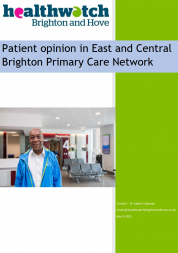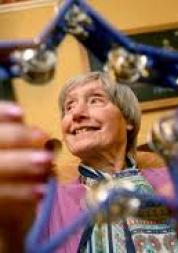Digital Exclusion – Briefing report
This reports looks at the different definitions of digital exclusion, why people are digitally excluded, why is it important, and its extent nationally and locally. It also looks at local efforts to increase digital inclusion.

Report recommendations to reduce digital exclusion in Brighton and Hove
- Need to understand that digital exclusion occurs across different levels. Some may have no digital access at all whereas others have some basic skills but need some enhancement to access health services (for example). Digital exclusion operates over a spectrum from no motivation and no interest through to people wanting to enhance skills and get the most out of the internet.
- Need to understand that motivation is one of the biggest barriers to digital exclusion, so it is critical to encourage people to initially see the potential benefits in areas they are interested in.
- Need to enage people who are digitally excluded or those having just received skills training to understand more about motativtions, benefits and ultimately 'what works' in reducing digital exclusion.
- It is important to join up and share learning from the variety of initiatives in Brighton and Hove. For example, share learning from Citizens Online's Digital Champions, the Digital Ambassadors pilot, the Good Things Foundation courses and training materials, and other local community projects (e.g. Hangleton and Knoll Project).
- To underpin the shared-learning and to avoid duplication of resources, it is necessary to map or create a directory of the various initiatives within Brighton and Hove.
- Increase resources to support those that can encourage and enable people to become more digitally included. This includes training for more of Citizen Online’s Digital Champions in order to reduce the current waiting list of those digitally excluded. Also, this can support the training of frontline staff (e.g. GPs, GP Receptionists, Practice Nurses, Practice Managers, and Pharmacists) to embed digital into their day-to-day interactions with patients.
- Provide resources to those local organisations moving towards digital to make sure people are not excluded as part of the process.
- Provide free broadband in rural areas and other settings like Seniors Housing.
- Invest in the potential for peer support to reduce digital exclusion, involving friends, families, carers, intergenerational initiatives (younger to older people), and Social Prescribers.
- Provide resources for technological equipment to be shared and loaned to those digitally excluded. Also consider resources for assistive technology e.g. Voice activated systems or ‘virtual assistants’ such as Amazon Echo (Alexa) to support those for whom this would benefit.
- Establish a central evaluation portal to monitor the range of initiatives across Brighton and Hove and assess whether the acquisition of digital skills ultimately affects health outcomes across the city.
Downloads
Digital exclusion in Brighton and Hove - full report with executive summary
Digital Exclusion report slides
Infographic - Digital Exclusion

